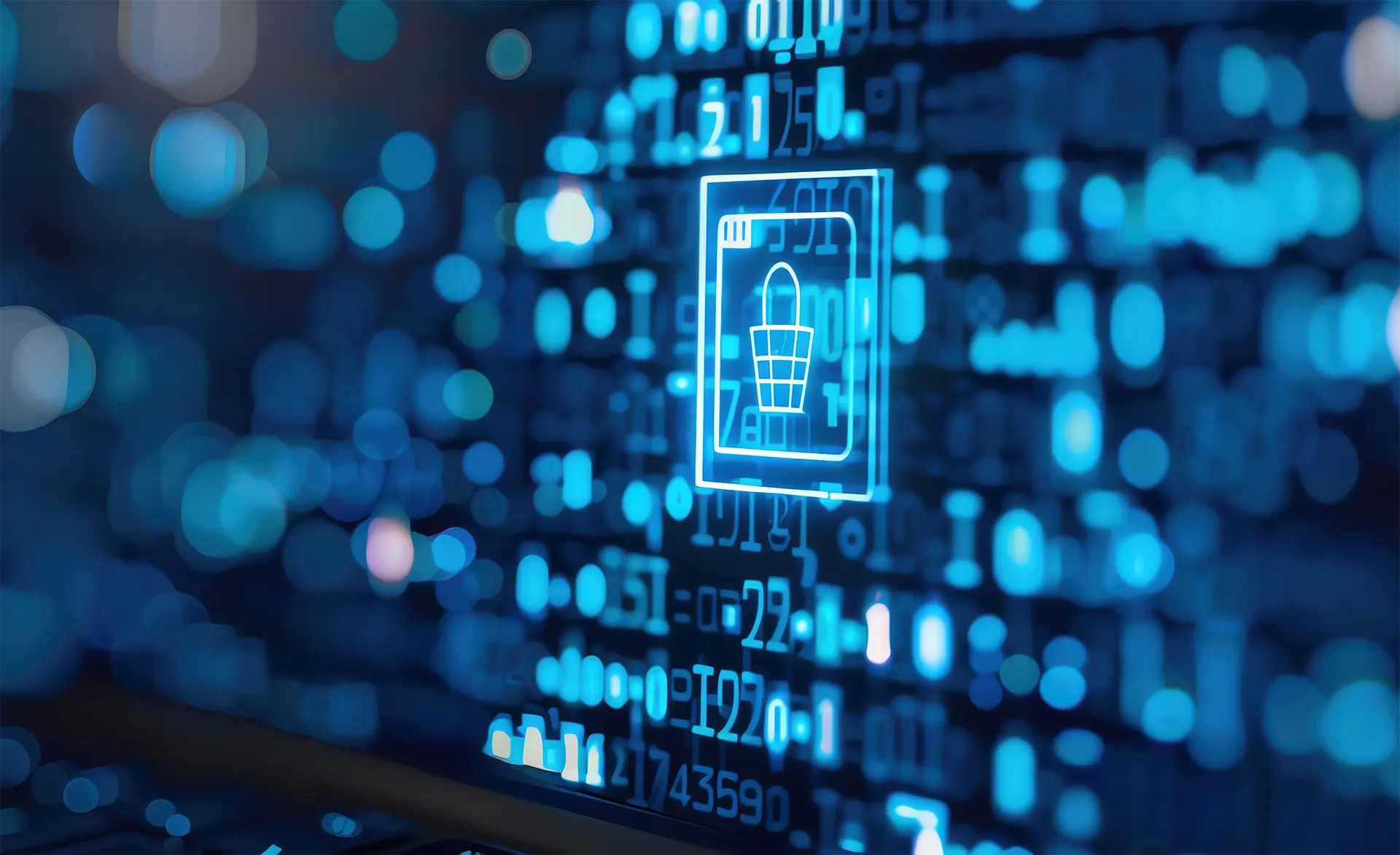Table of contents
- Smart card security
- Smart card security attacks
- Smart card security certificates
- Uses of smart cards
- Smart cards and smart card readers
- Ensuring robust security for smart cards
Smart cards have become a crucial element in modern information security, used for authentication, digital signatures, and identity management. However, like any technology, smart cards can be subject to various types of attacks and vulnerabilities.
Smart card security
Smart cards are portable devices that contain a microprocessor and memory, used to securely store information. These devices offer greater security compared to traditional magnetic stripe cards because the data is encrypted and access is controlled via a PIN or a public key.
One of the main security features of smart cards is their ability to perform cryptographic operations internally without ever exposing private keys outside the device. This significantly reduces the risk of data compromise.
Smart card security attacks
Despite being designed with robust security mechanisms, smart cards remain vulnerable to several types of attacks. These attacks can be categorized into different groups, each with specific characteristics and techniques.
Physical attacks
Physical attacks require direct access to the smart card and may involve manipulating the chip to obtain confidential information:
- Electron microscopes
Attackers can use electron microscopes to examine the internal circuits of the smart card. This allows identifying and manipulating specific points on the chip to extract sensitive data.
- Focused Ion Beam (FIB)
The FIB technique enables physical modification of a chip’s circuits. This can be used to disable security protections or insert new functionalities that facilitate data theft.
- Electromagnetic emission analysis attacks
By measuring the electromagnetic emissions produced by the smart card during operations, it is possible to gather information that could reveal cryptographic data or private keys.
Software-based attacks
Software-based attacks aim to exploit vulnerabilities in the smart card’s operating system or management software:
- Malware
Malware infection can compromise the security of smart cards. Malware can be designed to intercept communications, manipulate data, or even clone the smart card.
- Vulnerability exploits
Vulnerabilities in smart card operating systems can be exploited to gain unauthorized access. Attackers may exploit programming bugs or resource management errors.
- Brute force attacks
Although most smart cards limit the number of PIN entry attempts, attackers can still attempt brute force attacks to guess the PIN or other credentials.
Side-channel attacks
Side-channel attacks exploit physical or temporal information produced during cryptographic operations:
- Power consumption analysis
By monitoring the power consumption of the smart card during operations, attackers can obtain useful information to deduce the cryptographic keys used.
- Timing attacks
Measuring the execution times of cryptographic operations can reveal information about the keys used. Small variations in timing can reveal details about key structures.
- Differential Power Analysis (DPA)
This advanced power consumption analysis technique allows collecting statistical information useful for deducing the cryptographic keys used by the smart card.
Cloning attacks
Smart card cloning is a complex but possible process that can be achieved through various techniques:
- Reverse engineering
By analyzing an existing smart card, attackers can replicate the design and create a functional copy. This process requires a deep understanding of smart card technology.
- Skimming
In payment contexts, attackers can use skimming devices to capture smart card data during transactions. This data can be used to create copies of the smart card.
- Communication interception
Communications between smart cards and readers can be intercepted and analyzed. If the data is not adequately encrypted, it can be used to clone the smart card.
Supply chain attacks
Supply chain attacks aim to compromise the security of smart cards during the production or distribution process:
- Backdoor insertion
During production, attackers can insert backdoors into smart card chips that can be exploited later for unauthorized access.
- Compromised delivery devices
If smart card delivery devices are not secure, attackers can intercept and modify smart cards before they reach end users.
- Management software manipulation
The software used to manage smart cards can be compromised, allowing attackers to insert vulnerabilities or malware.
Defenses against attacks
To protect smart cards against these attacks, a series of security measures must be implemented:
- Physical protections
Use of resistant materials and advanced packaging techniques to prevent physical access to internal circuits.
- Regular updates:
Frequent firmware and software updates to correct vulnerabilities and improve security.
- Advanced encryption
Use of advanced cryptographic algorithms and sufficiently long keys to prevent unauthorized decryption.
- Multifactor authentication
Implementation of multifactor authentication to reduce the risk of unauthorized access.
- Continuous monitoring
Constant monitoring of smart cards and their communications to detect suspicious activities or attack attempts.
Smart card security must be continuously updated to withstand these and other types of attacks. While the user enters the PIN for authentication, additional measures must be implemented to ensure that only authorized users can access sensitive information.

Smart card security certificates
To ensure a high level of security, smart cards must have internationally recognized security certificates. These certificates attest that the smart card has undergone rigorous security testing and has passed a series of evaluation criteria. Among the main security certificates are:
- Common Criteria (CC)
This international standard allows users to specify, implement, and evaluate the security of IT products. - FIPS 140-2
A U.S. government standard for the certification of cryptographic modules’ security. - EMVCo
Mainly used in the payment sector, it certifies the security of smart cards and payment terminals.
In addition to certificates, the security of a smart card is enhanced through regular firmware and software updates that must be performed to correct any vulnerabilities that have emerged over time.
Uses of smart cards
Smart cards are used in a variety of contexts, including:
- Authentication
Smart cards allow users to securely authenticate to computer systems, corporate networks, and online services.
- Digital Signatures
Using a private key, smart cards can create digital signatures that ensure the integrity and authenticity of electronic documents.
- Cryptography
Smart cards can perform complex cryptographic operations, such as generating and managing cryptographic keys.
- Payments
Used in credit and debit cards, smart cards offer secure transactions through advanced encryption.
In each of these cases, the security of the smart card must be strictly controlled to prevent unauthorized access and protect sensitive information.
Smart cards and smart card readers
The interaction between smart cards and smart card readers is crucial to ensure the overall security of the system. Smart card readers must be secure and reliable, capable of correctly handling communications with the smart card without introducing vulnerabilities.
- Contact readers
These readers require the smart card to be physically inserted into the device. They are widely used in authentication and payment applications.
- Contactless readers
They use RFID technology to communicate with the smart card without physical contact. They are common in public transport systems and access cards.
- Hybrid readers
They can read both contact and contactless smart cards, offering flexibility in various use scenarios.
The security of smart card readers must be ensured through certifications and regular security checks. Comments and suggestions on the choice of readers can improve the overall system implementation.
Ensuring robust security for smart cards
Smart card security is a complex and constantly evolving field. It is essential to understand the various types of attacks to which smart cards may be subject and implement appropriate measures to mitigate these risks. Using recognized security certificates and regularly updating software are fundamental steps to maintaining high security levels.

